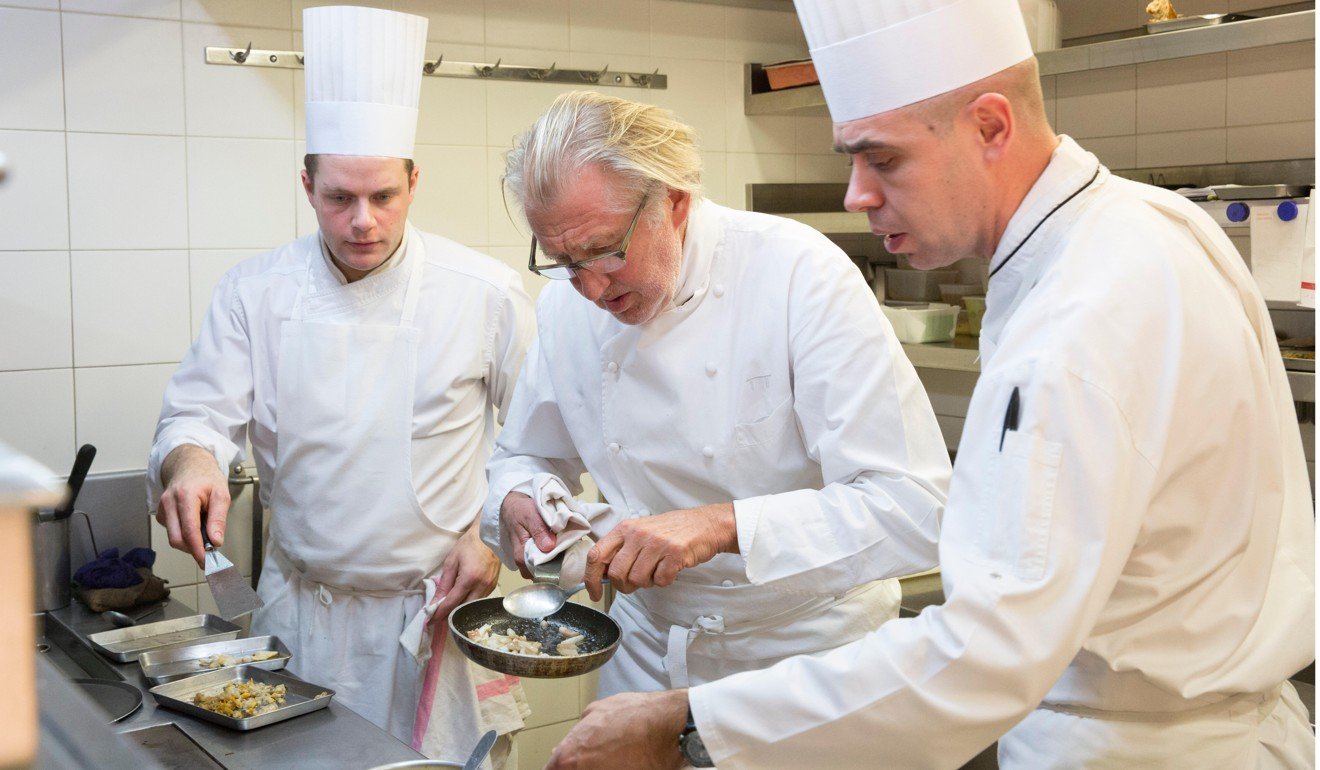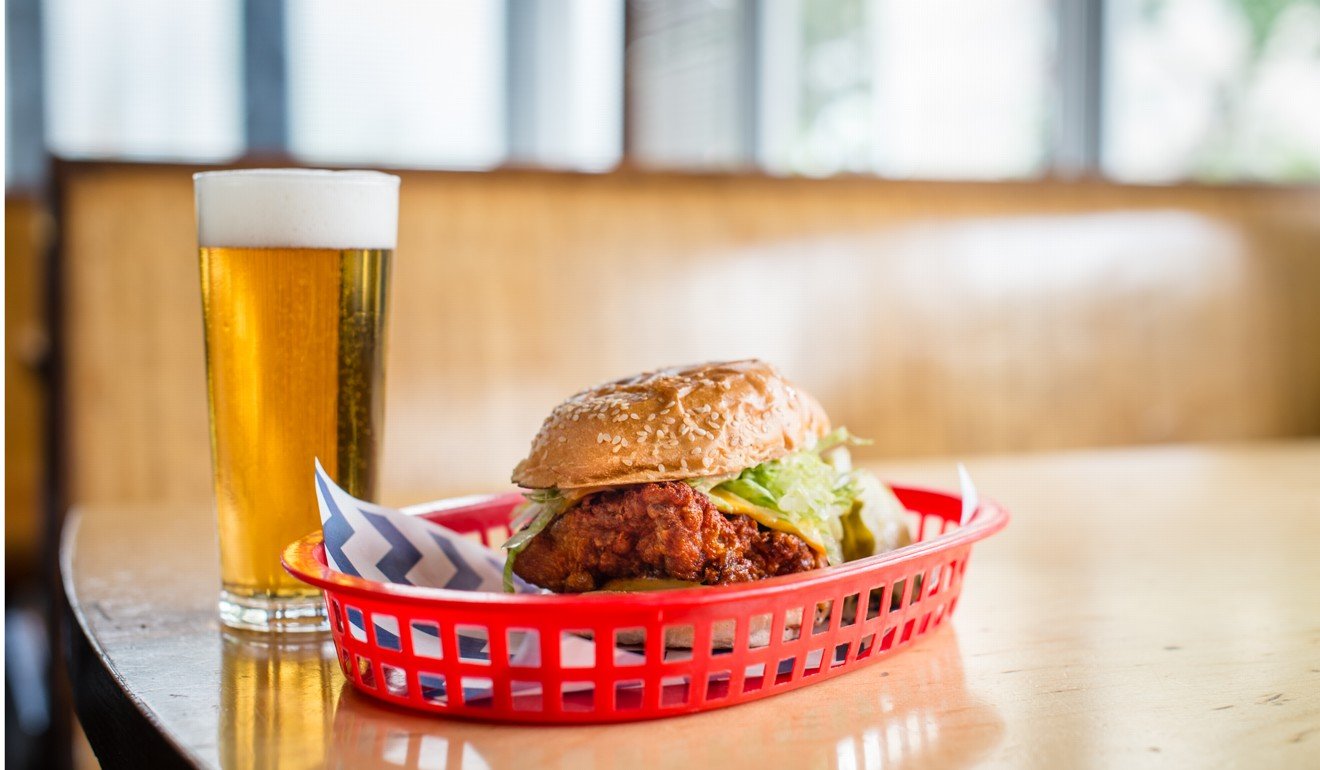
How dramatic weight-loss surgery helped roast-pork-loving chef go from fat to fit
- After apprenticeships with Luke Mangan and Pierre Gagnaire and an epiphany in South Carolina, Morgan McGlone opened Belles Hot Chicken in Australia
- The New Zealander, recently back in Hong Kong at Commissary, which he founded, saw his weight hit 196kg before surgery helped him shed 88kg
Did you always want to become a chef? “I actually wanted to play rugby but I was lazy [laughs]. I thought you didn’t have to train. Before I turned 18, I was naturally fit and sporty, so you think it’s going to last forever. My maternal grandfather was a farmer, my Irish paternal grandfather a fisherman and short-order cook. We had a lot of corned beef, cabbage, tripe and milk, colcannon, roasted meats and fish.
“My father was a chef in the New Zealand Army and we moved to Australia when I was five, and I started cooking. When my parents were at work, I made my brother and sister omelettes and toasted cheese sandwiches after school; when I was older, I helped my dad prepare vegetables and peel things.”
Chef Luke Mangan on Richard Branson and the Roux brothers
What was it like working for Australian chef and restaurateur Luke Mangan? “When I was 17, I started a four-year apprenticeship. By the time I finished I was a commis chef for Luke. I learned some important lessons, like how to make sauces, how to butcher, how to run a section, how to work in a team.”
How was your apprenticeship with French chef Pierre Gagnaire? “After a few years with Luke, I went to work for Pierre Gagnaire in France. We worked so hard – you get so dedicated to a particular chef and what he’s trying to do, even though we were paid the equivalent of US$200 a month. I didn’t touch a pot for the first six months; I was picking herbs, plucking birds, scaling fish, making staff meals.
“Gagnaire was very, very passionate. I didn’t learn any techniques or special sauces, but more about the craft. I went back to Sydney to work for Luke again and then became a private chef for a family in New York. They had homes in Sydney, St Barts, Bermuda and Southampton. I was in New York when 9/11 happened and thought I would lose my job. But my employer left for Palm Beach for a month and let me use their apartment in Paris.”

Tell us about your stint in the modelling industry. “In New York, I met an Australian photographer who asked me to cater for his photo shoots, and from there I became a junior booker at a modelling agency. I was 28 and wanted to stop cooking altogether. The fashion industry is so competitive and I never really liked the vibe of New York. It was very Sex and the City, hard to date girls. I went to Brazil for two years, until 2005, and hung out with chef Alex Atala [of D.O.M., in São Paulo].
“In 2011, I went to work for Sean Brock and it was an epiphany. In Australia, when you order food, you pick up the phone and ask for two sides of snapper cut into 20 150-gram fillet steaks. But at Sean’s restaurant [Husk, in Charleston, South Carolina, the United States], I worked directly with farms and farmers, where you can order 100 pounds [45kg] of tomatoes but sometimes only 30 pounds show up, or the farms give you 12 crates of collard greens. What are we going to do with them?
“We made a lot of collard green kombu, hillbilly dashi. I was only going to work with Sean for a month, but ended up staying for 3½ years. He asked me to be head chef of Husk, and I was the first foreigner to run a Southern restaurant.”
Where to get Hong Kong’s best fast-food fried chicken
What’s the secret behind your fried chicken at Belles? “I make it using an old African-American technique of flour hydration. The chicken is brined, floured, allowed to hydrate for 12 hours in the fridge, then when it’s at room temperature, the pieces are re-floured then fried. That gives it the crispy exterior and it’s super juicy.
“We pair the fried chicken with organic, biodynamic, natural wines. I’ve always liked the acidity of these wines, and the way they are made holds true to how I feel about food: less intervention, minimal sulphur, if any, organic farming, zero spray, zero preservatives. I get really bad migraines from sulphur.”
Tell us about your drastic weight loss. “I used to weigh 196kg. I had a bariatric operation in 2016 and now I weigh 108kg. I can eat only 250 grams at one seating, so I eat multiple times a day. I exercise five times a week, including three days with a personal trainer. I also do intermittent fasting and it’s easier with a smaller stomach; I don’t have hunger pangs. Before I would have siestas in the afternoon and late-night suppers. It was like walking around with an 88kg backpack.”

How has this changed your life? “I feel more focused. I drink a lot of water. I used to drink three to four Cokes a day, now I don’t even look at soft drinks. My wife [Trisha Greentree] is super into fitness. We’re both chefs and we both used to love eating roast pork. But as we are getting older we’re getting fitter, we’re more into the longevity of our lives.
“Nowadays, I hate being up late at night, whereas before I’d be up until 4am. Now I’m in bed by 9pm, wake up at 5.30am, the trainer comes at 6.30am and then I start my day.”
Morgan McGlone was in Hong Kong for a pop-up at Commissary, in Pacific Place, Admiralty.

